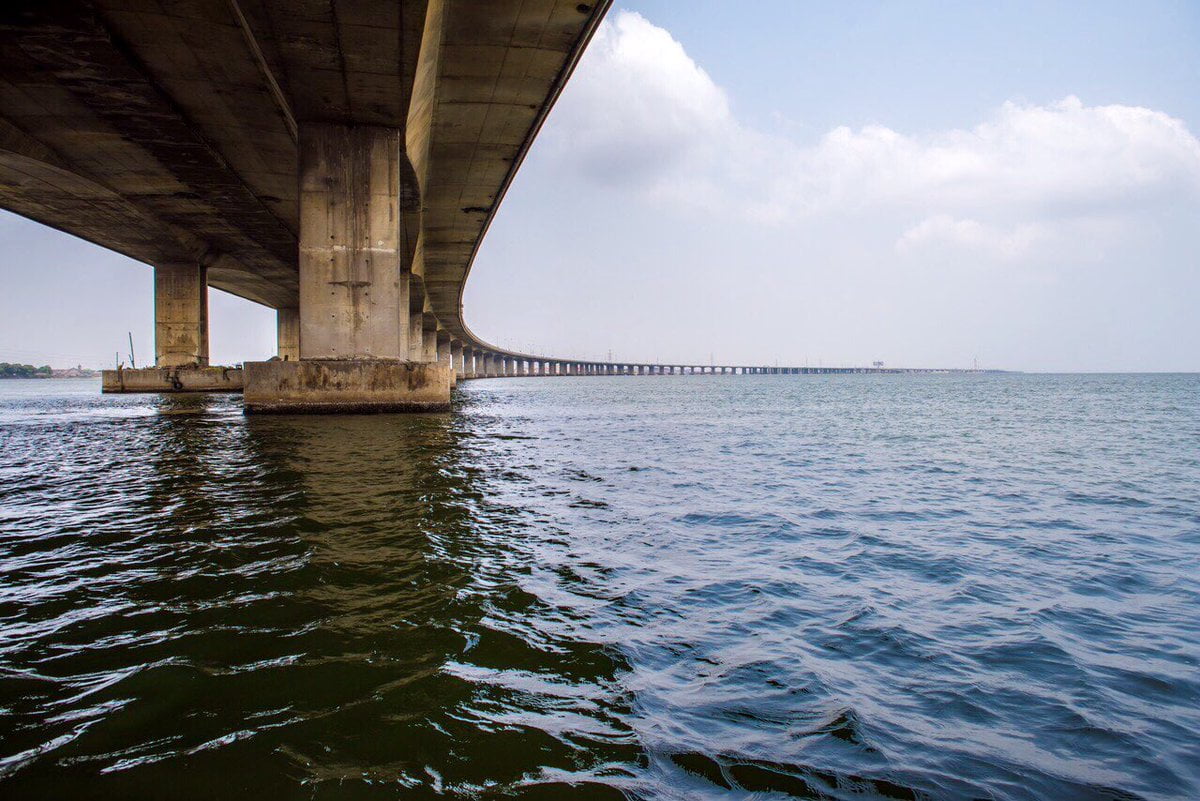News
The Dark History of Suicide Attempts on Third Mainland Bridge

In the bustling metropolis of Lagos, the Third Mainland Bridge stands as a symbol of connectivity, yet in recent years, it has also become a site of tragic endings. Stretching 11.8 kilometres, the bridge, once heralded as a solution to traffic congestion, has taken on a more sinister role in the lives of some Nigerians.
A sombre incident in 2022 casts a spotlight on the disturbing trend. Adetutu Adedokun, a respected Department of State Services member, shocked friends and acquaintances when she exited an Uber and plunged into the lagoon below.

Reports revealed that a heated phone conversation with her fiancé pushed her to this drastic step. Such a heart-wrenching transformation from a successful and capable individual into a victim of despair underscores the urgency of addressing mental health issues.
Tragically, Adetutu’s case is not isolated. The harrowing video of an elderly man gripping the Third Mainland Bridge’s railing while contemplating ending his life is a haunting reminder of the darkness that has permeated this iconic structure.
Instances like the 2017 suicide of Dr Allwell Orji, a medical practitioner, and the near-miss suicides of Titilayo Momoh, a textile dealer, and most recently, Farida Sobowale, a socialite, emphasize the pressing need for intervention and support.
Nigeria, despite its vibrancy, grapples with a stark reality: a high suicide rate that surpasses its African counterparts.
Dr Titilayo Tade, a Lagos University Teaching Hospital specialist, has highlighted this alarming trend. The reported suicide rate of 6.9 per 100,000 in 2019, higher than in 2012, suggests an unsettling escalation. Additionally, Nigeria bears the unfortunate distinction of having the highest rates of suicide and depression in Africa.
Within this context, the World Health Organization’s statistics reveal a disturbing figure: 9.5 suicides per 100,000 people in Nigeria. The situation is further complicated by legal complexities, as suicide remains a crime under Section 327 of the Criminal Code Act, carrying a potential one-year prison sentence. Equally unsettling, Section 326 stipulates severe penalties for those who aid or counsel another individual to commit suicide.

In the face of this disheartening reality, steps must be taken to bring about change. Increasing mental health awareness is paramount. Fostering an environment where open conversations about mental well-being are encouraged can play a pivotal role in destigmatizing seeking help. Educational initiatives and accessible resources should be implemented to provide individuals with the tools to recognize signs of distress in themselves and others.
Furthermore, legislative adjustments are imperative. The move by the House of Representatives to replace jail sentences with community service and counselling for those who attempt suicide is a step in the right direction.
However, a comprehensive overhaul of mental health policies and practices is needed to ensure that individuals grappling with emotional turmoil receive appropriate care and support.
In conclusion, the Third Mainland Bridge’s transformation from a symbol of connectivity to a site of despair is a troubling manifestation of a more significant issue. Nigeria’s high suicide rates underscore the critical need for mental health awareness and comprehensive support systems.
By fostering open dialogue, advocating for policy changes, and providing accessible resources, Nigeria can work towards a future where its citizens find hope, resilience, and a renewed sense of purpose.

Click Button Below to Join Our Telegram Groups

For Advert Inquiries & News/Article Publishing
Call:+2348033888791, +2347069999005
E-mail: legalattorneyblog01@gmail.com









